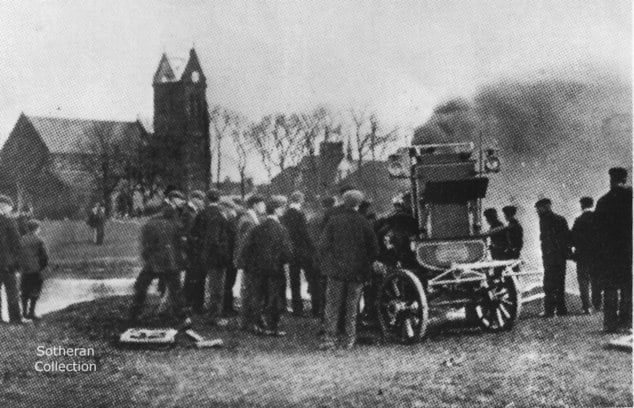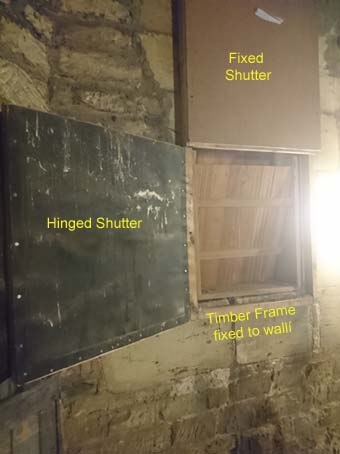Comments
-
Do we stop teaching people too soon?As John said, "If they are surrounded by ringers of low skill, low ambition and limited horizons then that is the culture they will absorb."
The would-be ringers are limited by the abilities of those in charge of the tower or responsible for their introduction to ringing. I would guess that a great many of those who are teaching newcomers suffer some or all of the following limitations:
- Not been taught by a competent ringing tutor themselves
- Have limited experience of ringing outside of their 'home' tower
- Don't know or have never considered how to break ringing down into 'bite-size' elements
- Have only one way of explaining PH which they repeat like a mantra each week, rather than looking for other explanations or different forms of words
Another aspect of well-structured tuition is the difference between positive and negative tuition. There are towers where learners are routinely told "Don't do that" rather than what they should do. I prefer to see persistent errors (such as always striking late at backstroke or clipping other bells in a PH) not as a fault but as a point for improvement. -
How many elephants do we have in the room?". . . very few people have any awareness of Ringing 2030."
I have seen occasional references to this but despite having been a ringer for 60+ years, I confess I have no idea of the purpose/objectives of the scheme. It has never been mentioned in the towers where I ring. I guess it is connected with recruitment and is focused on the major conurbations. That's the elephant in my room! -
favouristism and experienced ringersIt may be partially due to the ability and willingness to learn. At a tower where I used to teach, there was a core of long-established plain hunt ringers and no matter how I tried I could not find a way to lead them forward and away from ringing by numbers.. It was a bit like children learning to swim and being reluctant to let go of the edge of the bath! Eventually I gave up! Give me open minds and enthusiasm every time!
-
A Job Description ...What is th effect of charging for weekly practices? In the past some have argued that we mustn't charge for tuition or the weekly practice night for fear it deters new blood; others have said that many people don't appreciate things that are free.
On the other hand virtually every other voluntary group makes a charge, be it the meal at a Rotary Club or a weekly subscription for Scouts, Guides, WI or a local history society. Would a weekly subscription strengthen our ranks? -
Getting individualists involvedIn my early ringing days in the 1960s & 70s, we were blessed with two territorial associations whose boundaries were almost contiguous - the Cleveland & N.Yorks Assoc and the North East Branch of the YACR. Each organised monthly meetings but they were cunningly arranged to be 2 weeks out of sync with one another, resulting in us enjoying fortnightly meetings.
In those days when communication was by written letter or word of mouth we were all in close touch with other towers and the branch committee. Attendance at the fortnightly meetings was usually around 30+ ringers on each occasion.
Perhaps I'm a digital dinosaur but it seems to me that the proliferation of communication channels - FaceBook, WhatsApp, email, Skype and all other other channels seems to have dissipated the communicatons and unless one subscribes to them all, then communications get lost in the ether.
However, my main point is that frequent well-run meetings that rang from PH methods to Surprise-8 are almost guaranteed to create greater involvement than the occasional meeting every 2 or 3 months. -
Publicity materialTwenty years ago, our local 'star' tower - 4-spliced and 8-spliced was the starting pooint on practice night - took the same view. Now it is limited to ring rounds & call changes and PH on 5. The writing is on the wall for so-called 'elite' towers that shun regular recruitment.
-
Cashflow forecast spend for 2025 £24,000 overstatedWhat is the risk of some associations/guilds, especially the smaller ones, disassociating themselves from the CCBR rather than meet the demand for higher affiliation fees? Out here at the grass roots of ringing I reckon only one-in-ten local ringers (if that) is even aware of the CCCBR.
-
Publicity materialYes, Jason is absolutley right. I should have mentioned that we promoted each our sequence of events on the local FB pages too. Incidentally, our next 'Teddy Bear Death Slide' is in mid July - see poster attached.Attachment
 Teddy A4 poster 2024
(124K)
Teddy A4 poster 2024
(124K)

-
Publicity materialYou need to come out with 'all guns blazing'! A single poster campaign or open day may have some effect but if you combine several events you may well find that their combined effect is somewhat greater.
During the summer our church has a monthly 'Tea on the Lawns' - the church ladies serve afternoon teas once a month to generate a few hundred pounds for the church's funds. One month (July) we ran a 'Teddy Bears Death Slide' - a zip line from the tower roof down to the church porch. Children were encouraged to collect sponsorship for the 'Dare-devil Soft Toys' to shoot down the line. This attracted 50-60 people to the church and raised awareness of the tower. It also raised over £600 for the church!
The following month we opened the tower and invited the public to bring their children and grandchildren to visit the ringer’s room. We weren't specifically seeking to recruit the children but we wanted them to draw their accompanying adults into the room. We had one bell set at backstroke so that the rope was out of the way and we used it to demonstrate to the adults while the children were allowed to have a few assisted pulls to chime one of the trebles.
The third month, September, we had an Open Night specifically aimed at recruiting. This was deliberately held on our normal practice night; there is no point in attracting a new recruit who then says 'But I can't come on a Wednesday' or whatever is your practice night!
We have a brief PowerPoint slide show that gives some basic information about the tower and ringing. We project it onto the whitewashed walls of the ringing room and it loops round continuously every 5-7 minutes. Before we raised the bells, the visitors who wished to, climbed to the bells on the floor above in escorted groups of 3 or 4 (our access is very easy). Then we demonstrate ringing rounds & call changes and finish with something like a bob course of Plain Bob - there is no need to 'show off' with something more exotic because it is all a mystery to the visitors. Finally, we invite each of the visitors to pull a few assisted backstrokes usually in rounds.
Last year we attracted over 30 visitors; 8 expressed an interest and attended our basic learners' sessions for a few weeks; of them 3 stayed the course and have joined our Sunday service band.
Attached (I think!) is the poster we use - based on a CCCBR design.Attachment Recruit poster -Marske version 2
(3M)
Recruit poster -Marske version 2
(3M)
-
Birds nesting in Towers and bell chambersThe top of our tower, the clock and bells were destroyed by fire when a mass of nesting material caught fire on Easter Day 1902.

-
We Are All Residents NowIt makes a bit more sense. When I first joined, the Associate Members paid a lower subscrirption than the Full Members. Allegedly this resulted in a number of ringers never admitting to having rung a 720 or a QP in order to avoid the higher subscription rate!
-
Improving the sound of a tenorWe've tried various combinations of open and closed shutters over the years. I might repeat the exercise to see if we can effect some improvement.
-
Improving the sound of a tenorThe louvers are already boarded up. Each vertical 'slot' in the wall has 4 panels each abour 1m sq x 75mm thick and filled with rockwool. The lowest section of each column of panels is hinged to open and is usually left open. (I was going to insert a photo but can't find how to do it!)
If we can reduce the strident note of the tenor when heard outside, we can, if necessary, also adjust the internal acoustic layer between the bell and the ringers to compensate.Attachment Shutters 1 copy
(42K)
Shutters 1 copy
(42K)

-
Improving the sound of a tenorYes, that's a fair point Roger; there is another tower nearby where the quality of the sound varies considerably depending on which side of the tower you stand.
Internally, the sound in the ringing chamber is quite acceptable but outside, particularly on the south side - where the tenor is located - the 'mix' of the sound is dominated by the tenor.
I might try getting a local engineer to reduce the weight of the alternate clapper that we still have tucked away somewhere. I'm a bit wary of trimming too much off in case it weakens the shank of the clapper. -
ringing on a heavy eight irregularlyIt can often be a combination of ringing skills & confidence. There is a heavy eight (23cwts) near us that have recently come back to life after hanging dormant for several years. Very few of the ringers have the physical strength or handling skills to ring them accurately to a plain hunt, let alone to methods. So we stick to the front six while we introduce them to basic change ringing and use the full eight only for r&cc.
-
Advice on ringing for older ringersStella, I can see that our different conditions are causing similar but different problems. Mine is the lack of mucle-power to raise one arm to full height; yours is the far greater discomfort of arthritis grinding away against movement. Good luck in July!
-
Advice on ringing for older ringersIf you have trouble ringing the lighter bells, surprising as it may seem, you may have less discomfort ringing the mid-range bells. With lighter bells what you are missing is the bell's own momentum. I hadn't realised, until I damaged my shoulder, how much I relied on the momentum of the bell to help lift my arms, especially at backstroke. As your hands pass you chin on the way up to either stroke, the momentum of the bell helps lift them to the end of the stroke.
Our trebles weigh around 2-3 cwts. It is necessary to consciously raise the arms as not doing so is almost a prelude to ringing down! I now avoid the problem by ringing the mid-range bells. -
Advice on ringing for older ringersAfter a bad fall, I had a biceps tenotomy* to my right arm - consequently that the arm has only about 60% of its former 'pulling' power and raising it to backstroke can be a real ache. Occasionally I apply Ibuleve gel before I go ringing, more routinely, I ring the back stroke with my left arm only and my right arm hanging, relaxed, by my side, and use both hands on the sally. This works well for me.
(* For those 'in the trade': it was a biceps longhead tenotomy with decompression and rotator cuff repair.) -
When do you *stop* recruiting?NEW RINGERS FOR OLD!
Like most towers, we welcome new recruits of any age but there are drawbacks to taking on both younger and older woud-be ringers. Young teenagers tend to develop their skills more quickly, especially as they transition from rounds & cc to change ringing. On the down side, they tend to discover the opposite sex and/or leave the area for college or university. Older recruits are usually settled in the area and in their lifestyles but tend progress a little slower. Our most recent intake were people in their 50s - almost ideal!
As regards recruiting, we run two events most years. On a Sunday afternoon in the summer we often have a Tower Open Day. Visitors can visit the tower, climb up to see the bells (we have easy access), visit the clock room and even go onto the flat roof of the tower to take photos of the townscape. There is no attempt to recruit but those who wish may have a few pulls on a silenced bell. A short Powerpoint presentation loops round continuously, projected onto the white wall. For the avoidance of doubt (!) we have ringers stationed as stewards at every level in the tower to supervise and assist the visitors.
We follow this up in September with an Open Night for people who are interested in finding out more. This is always on our regular practrice night (we don't want recruits who 'can't come on Mondays') and is our 'serious' recruiting effort with trial pulls and demonstrations of rounds, call changes and method ringing.
Peter Sotheran

Start FollowingSend a Message
- Contact Us
- RingingForums Policy
- Terms of Service
- Useful Hints and Tips
- Sign In
- © 2025 Ringing Forums




